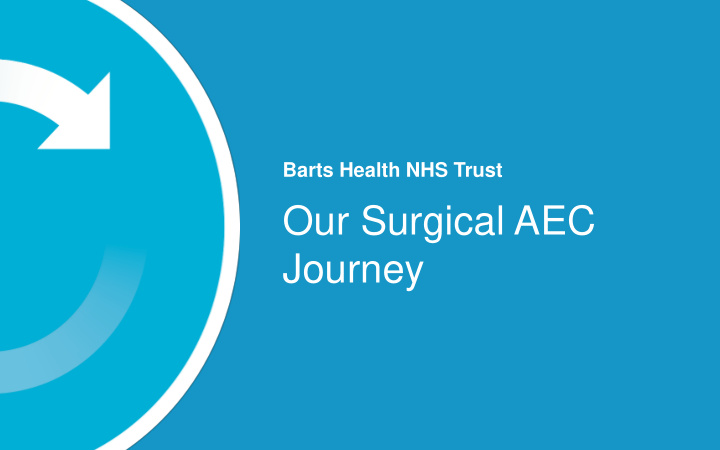



Barts Health NHS Trust Our Surgical AEC Journey
Background • 3 Sites – Royal London Hospital, Newham University Hospital, Whipps Cross Hospital • Decided to focus on the Royal London Hospital as it has an SAU and dedicated space. – Not fully utilised – Not well known – No permanent staff – No Data
Changes/Improvements – Royal London Hospital • Re-named it (ESAC) – Emergency Surgical Ambulatory Care and had signs created • Created a waiting room • Employed 2 permanent Band 6 nurses • Created a spread sheet to record details • Developed a good relationship with diagnostics particularly USS • Presented at the surgical audit days • Created posters, ways to communicate and spoke to any and all about our unit. • Went down to ED and attended morning nursing handover • Created an ESAC leaflet
Changes/Improvements
Changes/Improvements Discharges vs. Admissions 90% 411 503 80% 70% 60% 50% April - Sep = 532 40% Oct - Feb = 650 30% 121 20% 78 68 10% 0% Home Theatre Admit
Measurement/Impact of Changes
Challenges • 3 Sites – everyone at a different starting point • Data collection • Different ways of communication styles • Managing expectations • No extra resources • ICT delays • Restructuring delays – now changed due to increase in activity • Multiple ambulatory care areas starting • Number of initiatives looking at patient flow
How we overcame our Challenges
Next Steps • 7 day working – opening Sat and Sun • Learn from each site – WXH – run a trial with diagnostics placed within AEC • Using the PDSA cycle we re-developed the abscess pathway- now starting to develop the Biliary pathway • Discussions have started about expanding and accepting urology patients • Look at staffing levels and competencies and training packs
Recommend
More recommend